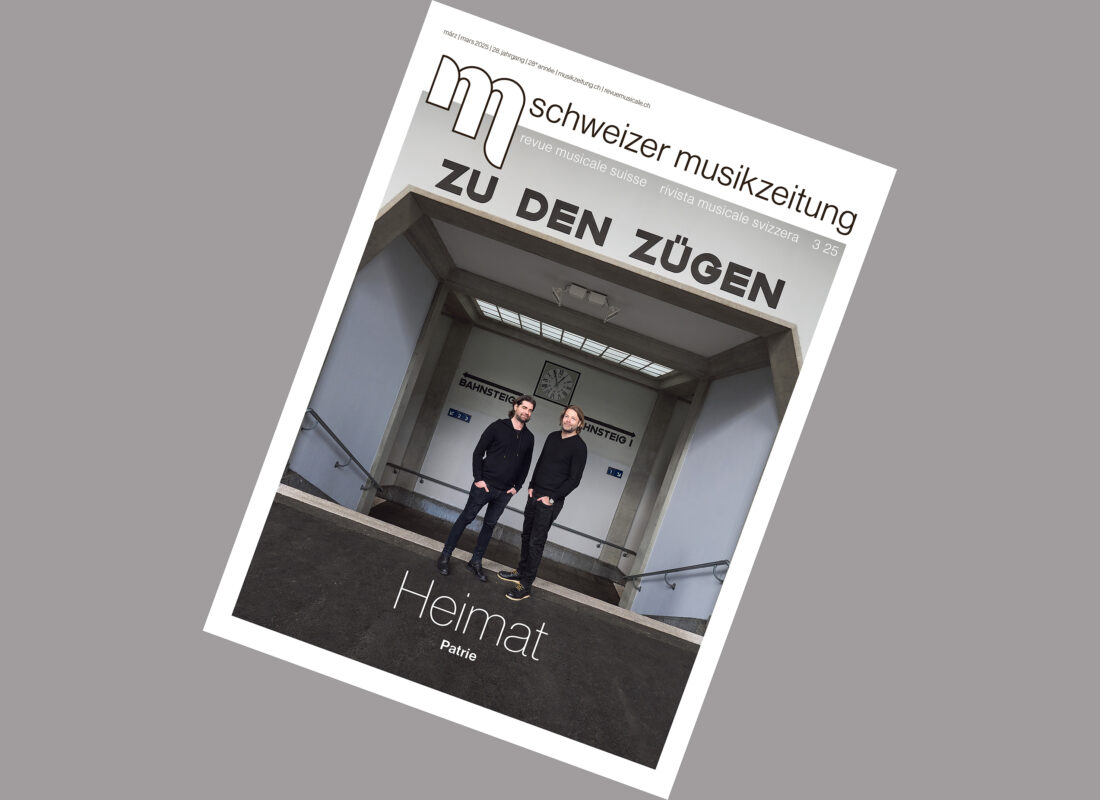Highly honored and poorly paid
While the ship sank beneath them, they persevered by playing. Many legends surround the fate of the musicians on the Titanic. The sober facts about their employment conditions, on the other hand, are less uplifting.


While the ship sank beneath them, they persevered by playing. Many legends surround the fate of the musicians on the Titanic. The sober facts about their employment conditions, on the other hand, are less uplifting.
On March 14 of this year, astonishing news broke in the English press: Wallace Hartley's violin had resurfaced. The German news magazine The mirror headlined the following day: "Titanic bandmaster's violin discovered in attic". In fact, the British auction house Henry Aldridge and Son presented a "sensational find" to the public. Andrew Aldridge reported that he had had the authenticity of the instrument tested by forensic engineers and researchers at Oxford University for seven years and that there was no doubt about it.
This was supposed to be the violin that the musician tied to his chest in a leather case decorated with initials before he fell into the water. His frozen body was recovered ten days after the accident. The violin is said to have been sent to his fiancée. She had given him the instrument as a gift. When she died, the historic piece was forgotten ... However, after the shipwreck, a very precise record was kept of what the victims found had on them. Hartley was wearing his musician's uniform with the green facings, epaulettes and buttons of the White Star Line. However, there was no mention of a violin.
The reporting on the reappearance of the instrument clearly indicates that journalists have doubts about the authenticity of the find with the salt water stains. However, there is no doubt about the undiminished public interest in the Titanic disaster, which occurred exactly 101 years before the violin was presented.

- Reminder sheet of the AMU
- wikimedia commons
Deteriorating employment conditions
Wallace Hartley was a violinist and leader of the eight-piece band on the Titanic. They usually played in two groups. A piano trio entertained the guests in the lounge of the a la carte restaurant and in the Café Parisien. To emphasize the continental flair, a Belgian violinist and a French cellist were engaged. A quintet played in the dining room or in the First Class Lounge. Percy Cornelius Taylor played both piano and cello. It was therefore possible to perform as a (low) string quintet (two violins, two cellos, double bass) or as a piano quintet. It is assumed that all eight played together for the first time on that fatal night.
Employment on ocean liners was in great demand among musicians at the time, although working conditions had deteriorated in the period leading up to the Titanic's maiden voyage. Previously, the shipping companies had hired the musicians directly. Now agencies came on the scene, but of course they also earned money. A report by the International Federation of Musicians (FIM), written by John Swift, states: "While the Titanic was owned by the White Star shipping company, its musicians had been engaged by the shipping agency, C. W. & F. N. Black, and booked as second-class passengers. Black was able to offer more favorable conditions by reducing the musicians' pay from the original 6 to 10 pounds to 0 to 4 pounds, withdrawing the monthly uniform allowance of 10 shillings and deducting the cost of sheet music from the musicians' pay. Protests by the United Musicians' Union (AMU), a forerunner of today's Musicians' Union, were unsuccessful."
The musicians had to master a varied repertoire, including salon and dance music as well as excerpts from orchestral works and operas. They played the popular hits of the day, but also accompanied devotions on board. They were allocated a room on deck E near the laundry where they could practise in the morning.
Heroism instead of life
Hardly any report on the sinking of the Titanic fails to mention the heroic chapel. The Worcester Evening Gazette quoted the survivor Mrs. John Murray Brown five days after the accident: "The band went from deck to deck and played all the time. When the ship sank I could still hear the music. The last time I saw the musicians, the water was up to their knees." But even the various eyewitness accounts, which were meticulously compiled by a commission of inquiry, disagreed on many points.
The ship collided with an iceberg at 11.40 p.m. on the night of April 14/15, 1912. An hour later, the band began to play on deck, ten minutes before the first lifeboat (half empty!) was lowered into the water. People still had very different perceptions of the danger. And the cheerful sounds ("lively airs") that were played possibly added to the confusion. The aim behind the instructions to the musicians was to avoid panic.
By 2.10 a.m., all the available boats had been launched, but a good two thirds of the people were still on deck or somewhere in the labyrinthine underbelly of the ship's belly. The steamer was leaning so menacingly that it was obvious that it would soon sink. "At that moment, bandmaster Hartley tapped on the bottom of his violin. The ragtime music ceased, and the sounds of the Episcopal hymn Automn floated across the deck and drifted far out over the water in the still night. In the boats, the women listened as if to something wonderful." This is how this fateful moment is later reported - romanticized like a novel (Walter Lord, The last night of the TitanicScherz 1955).

- The last piece played?
- National Postal Museum, Washington
The witnesses agree that music was played only a few minutes before the final sinking and before only screams could be heard. However, they disagree about the piece. The press, which pounced on the survivors, probably also contributed to the creation of multiple legends. The New York Times of April 21, 1912 ran the headline: "The band of the sinking ship chose the right hymn." It quoted the rescued radio operator Harold Bride, who sang the spiritual hymn Automn wanted to have recognized. It contains the suggestive line: "Keep me upright in mighty floods of water". Other witnesses remembered the chorale Closer my God to you. Later commentators pointed out that at the time there were two well-known pieces with the name Automn the chorale and a kind of sports palace waltz to whistle along to.
This point will probably never be clarified. What is certain is that the spiritual-heroic version was spread by many retellings and that the musicians of the Titanic were heroized to a particular degree. Of course, it was also possible to make money from this veneration. Resourceful publishers printed music sheets with the pieces in question and the picture of Wallace Hartley or they brought out new pieces that dealt with the catastrophe musically: Just as the Ship went down - a Song of the Sea or The Wreck of the Titanic - a descriptive Composition for Piano solo.
None of the musicians survived the disaster. The bodies of three of them, including Hartley, were recovered. The novelist Joseph Conrad, who had gone to sea himself, mocked the posthumous stylization: "It would have been much nicer if the Titanic band had been saved instead of having to go down playing - whatever they were playing, the poor devils ..."

- "A beautiful Song Inspired by the Wreck of the Titanic"
- wikimedia commons
Inglorious aftermath
The FIM report continues: "After the accident, the surviving relatives of at least one musician, but probably all of them, received an invoice and a statement of costs from the agency. Incredibly, the statement of costs explained that because the deceased musician's contract had expired at the moment the orchestra could no longer play, his fee was insufficient to cover all the costs he had incurred, including the White Star shipping company's lapel inscriptions on his jacket, the sewing of White Star buttons on his uniform and his sheet music. This was communicated without any sympathy or condolences."
The letter to the family of the 21-year-old violinist John "Jock" Hume confirming these outrageous demands has been preserved. The agency also demanded the return of five shillings from the family, which it had advanced to the young man to buy a new suit. It referred claims for compensation from the bereaved to the White Star shipping company. However, the company also refused to pay (just as it stopped paying its employees' wages at the exact time of the sinking) and again referred the matter to the Black Agency. Only thanks to benefit concerts by various orchestras was it finally possible to pay the families compensation. The commemorative sheet printed by the musicians' union with portraits of the eight musicians on board also brought in money, selling 80,000 copies within a month.
Presumably fueled by the shabby attitude of the shipping company and agency, accusations were made by relatives that the musicians had been deliberately sacrificed. The father of French cellist Roger Bricoux interviewed a surviving crew member and was told "... that the musicians were instructed to continue playing the whole time (...) that none of them were wearing life jackets and (...) that they were to be sacrificed on the basis of these instructions in order to prevent chaos from breaking out on board." (FIM report)
It stands to reason that the band would not really have radiated normality with life jackets. But when Wallace Hartley's body - with or without his violin - was recovered from the icy waters, he was wearing a life jacket.
The PDF of the article can be here can be downloaded.








